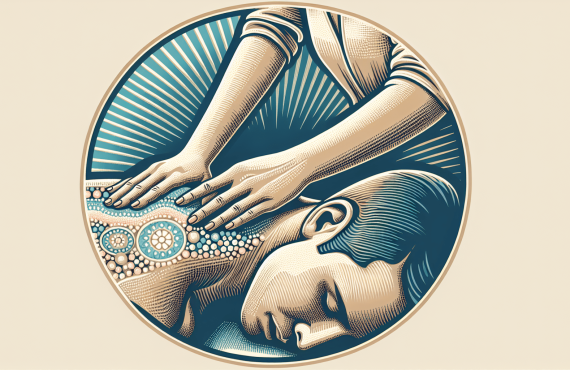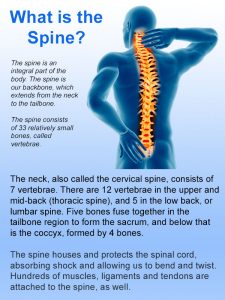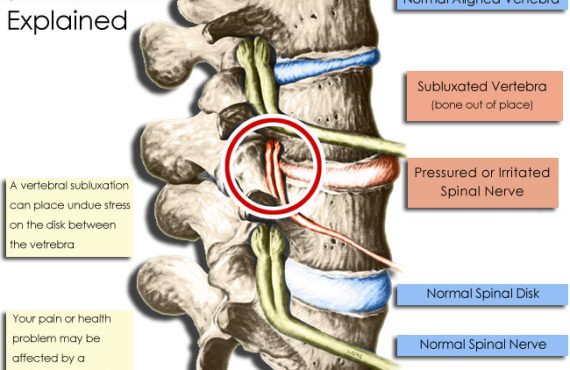If you are struggling with osteoarthritis and looking for effective relief, chiropractic care may be the answer you’ve been searching for. At Henry Chiropractic, owned and operated by Dr. Craig Henry, and with the expertise of Dr. Aaron Hixon, you can find a holistic approach to improving your health and wellness. Dr. Henry and Dr. Hixon are both licensed chiropractors who are dedicated to helping patients in Pensacola and the surrounding communities in Florida. From back pain to neck pain, they are here to provide personalized care and support you in feeling better each day. With a range of chiropractic techniques in their repertoire, you can trust that you are in good hands. So, let’s explore how chiropractic care can help manage osteoarthritis and bring you relief.
Table of Contents
What is Osteoarthritis?
Osteoarthritis is a degenerative joint disease that causes the breakdown of cartilage in the joints. It is the most common form of arthritis and affects millions of people worldwide. This condition typically develops gradually over time and commonly affects the knees, hips, and hands.
Definition of Osteoarthritis
Osteoarthritis is a chronic condition that occurs when the protective cartilage that cushions the ends of bones begins to wear down. This causes the bones to rub against each other, leading to pain, stiffness, and limited mobility in the affected joints.
Prevalence of Osteoarthritis
Osteoarthritis is incredibly common, especially among older adults. According to the Arthritis Foundation, over 32.5 million adults in the United States alone are affected by osteoarthritis. It is more prevalent in women than men and is a leading cause of disability worldwide.
Causes of Osteoarthritis
The exact cause of osteoarthritis is unknown, but several factors can contribute to its development. These include aging, obesity, joint injuries or repetitive stress on the joints, genetic factors, and certain medical conditions such as metabolic disorders or rheumatoid arthritis. It is important to note that while there is no cure for osteoarthritis, there are various treatment options available to manage symptoms and improve quality of life.
Symptoms of Osteoarthritis
Recognizing the symptoms of osteoarthritis is crucial for early diagnosis and effective management. The most common symptoms include:
Joint pain
Pain in the affected joints is the hallmark symptom of osteoarthritis. This pain can range from mild discomfort to severe, sharp pain. It typically worsens with activity or weight-bearing and may improve with rest.
Stiffness and limited mobility
Osteoarthritis can cause stiffness in the joints, making movements challenging and limiting range of motion. This stiffness is often worse in the morning or after periods of inactivity.
Swelling and inflammation
In some cases, osteoarthritis can lead to joint swelling and inflammation. This can cause the affected area to feel warm to the touch and appear red and swollen.
Cracking or grating sensation
Osteoarthritis can also cause a cracking or grating sensation called crepitus when moving the affected joints. This occurs due to the roughening of the joint surfaces.

Traditional Treatment Methods for Osteoarthritis
Several traditional treatment methods are commonly used to manage the symptoms of osteoarthritis. These include:
Medications
Nonsteroidal anti-inflammatory drugs (NSAIDs), such as ibuprofen or naproxen, are often prescribed to alleviate pain and reduce inflammation. In some cases, stronger pain medications or corticosteroid injections may be recommended.
Physical therapy
Physical therapy aims to improve joint function, reduce pain, and increase flexibility through targeted exercises, manual therapy techniques, and various modalities. This can help individuals with osteoarthritis regain mobility and strengthen the affected joints.
Surgery
In severe cases of osteoarthritis where conservative treatments have not provided relief, surgical interventions may be necessary. Joint replacement surgeries, such as a knee or hip replacement, can effectively restore joint function and alleviate pain.
Chiropractic Care for Osteoarthritis
While chiropractic care is often associated with spinal adjustments, it can also be beneficial for individuals with osteoarthritis. Chiropractic care focuses on restoring proper alignment and function to the musculoskeletal system, including the joints affected by osteoarthritis.
What is chiropractic care?
Chiropractic care is a non-invasive and drug-free approach to healthcare that relies on the body’s inherent ability to heal itself. Chiropractors use hands-on techniques, such as spinal adjustments, to restore proper joint function and alleviate pain.
How chiropractic care can help with osteoarthritis
Chiropractic care can provide relief for individuals with osteoarthritis by reducing pain, improving joint function, and increasing mobility. Chiropractors can customize treatment plans to target the specific needs of each patient, taking into account their unique symptoms and limitations.
Chiropractic techniques used for osteoarthritis
Chiropractors may use a variety of techniques to address osteoarthritis symptoms. These can include joint mobilization, stretching and strengthening exercises, soft tissue therapy, and lifestyle recommendations. By incorporating these techniques, chiropractic care aims to alleviate pain and improve overall joint health.

Benefits of Chiropractic Care for Osteoarthritis
Chiropractic care offers several benefits for individuals with osteoarthritis, including:
Pain relief
Chiropractic adjustments and therapies can help reduce pain and discomfort associated with osteoarthritis. By restoring proper joint alignment and reducing inflammation, chiropractors can provide effective pain relief without the need for medication.
Improved joint function
Chiropractic care aims to restore optimal joint function by addressing misalignments and imbalances in the musculoskeletal system. This can lead to improved range of motion, decreased stiffness, and enhanced joint mobility.
Increased mobility
By reducing pain, inflammation, and stiffness, chiropractic care can help individuals with osteoarthritis regain mobility and engage in activities they may have previously avoided.
Reduced dependence on medication
Chiropractic care offers a non-pharmaceutical approach to managing osteoarthritis symptoms. For those who prefer to avoid or minimize medication use, chiropractic care can provide an alternative solution for pain management.
Case Studies and Research
Numerous studies have explored the efficacy of chiropractic care for osteoarthritis. Research has shown that chiropractic interventions, such as spinal manipulative therapy, can lead to improvements in pain, joint function, and overall quality of life for individuals with osteoarthritis.
Additionally, there are countless success stories from patients who have found relief and improved functionality through chiropractic care. These testimonials provide further evidence of the positive impact chiropractic interventions can have on individuals with osteoarthritis.
Chiropractic Care vs. Traditional Treatment
When considering treatment options for osteoarthritis, it is essential to compare the effectiveness, potential side effects, and cost between chiropractic care and traditional treatments.
Comparison of effectiveness
Both chiropractic care and traditional treatment methods, such as medication and physical therapy, can be effective in managing osteoarthritis symptoms. However, chiropractic care takes a holistic approach by addressing the underlying musculoskeletal imbalances, which can provide long-term benefits beyond symptom management.
Potential side effects
Chiropractic care is generally considered safe when performed by a licensed and qualified chiropractor. Potential side effects are typically mild and temporary, such as soreness or discomfort after adjustments. In comparison, traditional treatment methods may carry risks associated with medication use or surgical procedures.
Cost comparison
The cost of chiropractic care for osteoarthritis can vary depending on the individual’s specific needs, the frequency of visits, and the chiropractic clinic. Traditional treatments, such as medications or surgery, may also involve significant costs. Considering the potential benefits of chiropractic care, it can be a cost-effective option for long-term management of osteoarthritis.
Choosing the Right Chiropractor for Osteoarthritis
When seeking chiropractic care for osteoarthritis, it is crucial to choose a qualified and experienced chiropractor. Consider the following factors when selecting a chiropractor:
Credentials and qualifications
Ensure that the chiropractor is licensed and has completed the necessary education and training to practice chiropractic care. Look for certifications or additional qualifications relevant to osteoarthritis management.
Experience with osteoarthritis
Inquire about the chiropractor’s experience in treating patients with osteoarthritis. Ask about their success rate, patient outcomes, and any specialized techniques or approaches they utilize for osteoarthritis management.
Patient reviews and testimonials
Read reviews and testimonials from previous and current patients to gain insights into the chiropractor’s quality of care and patient satisfaction. Positive reviews and recommendations can indicate a chiropractor’s expertise in osteoarthritis management.
What to Expect During a Chiropractic Session
If you decide to pursue chiropractic care for osteoarthritis, here’s what you can expect during a typical session:
Initial consultation and examination
During your first visit, the chiropractor will conduct a comprehensive evaluation to assess your condition and gather relevant medical history. This may include physical examinations, diagnostic tests, and discussions about your symptoms and lifestyle.
Treatment plan
Based on the evaluation, the chiropractor will develop a personalized treatment plan tailored to your specific needs. This plan may include spinal adjustments, therapeutic exercises, lifestyle modifications, and recommendations for at-home self-care.
Frequency of visits
The frequency of chiropractic visits will depend on the severity of your osteoarthritis, your response to treatment, and your overall goals. In the initial phases of care, more frequent visits may be necessary, with gradually decreasing frequency as symptoms improve.
Conclusion
Osteoarthritis is a common condition that affects millions of individuals worldwide. While traditional treatment methods can be effective, chiropractic care offers a holistic approach to managing osteoarthritis symptoms. With its focus on pain relief, improved joint function, increased mobility, and reduced reliance on medication, chiropractic care can be a valuable addition to an osteoarthritis treatment plan. By choosing a qualified chiropractor experienced in osteoarthritis management and understanding what to expect during chiropractic sessions, individuals with osteoarthritis can embark on a path towards improved quality of life and enhanced joint health.

































































